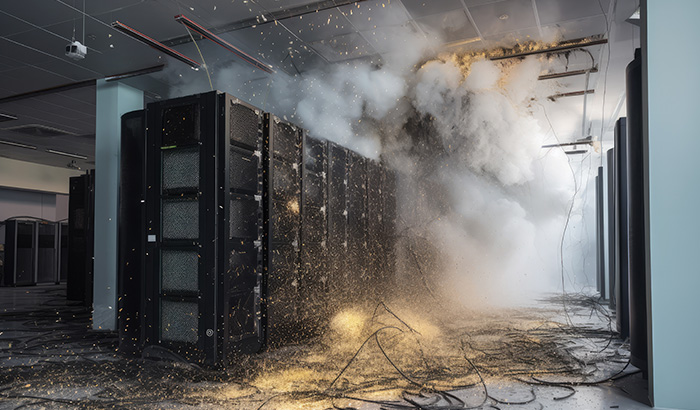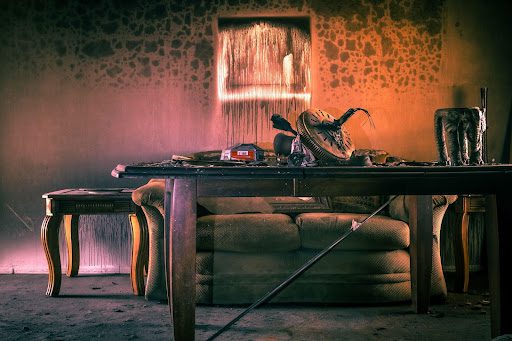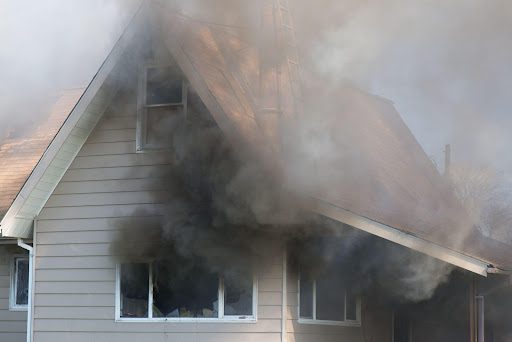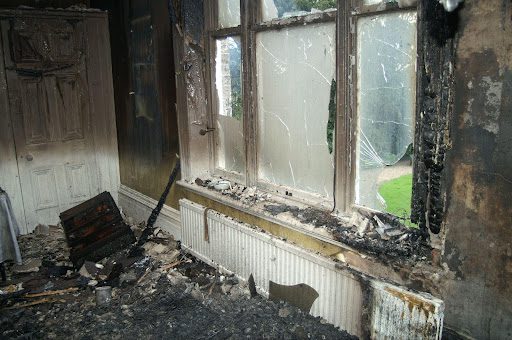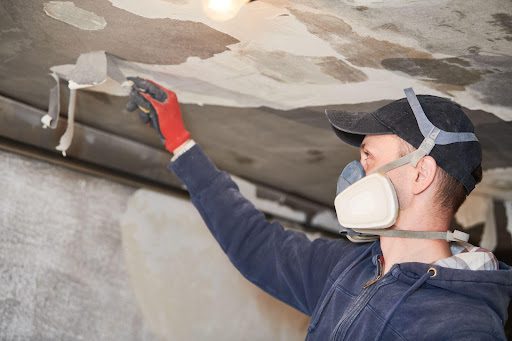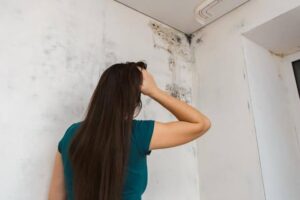Unfortunately, the health risks associated with smoke damage are often underestimated. Our goal is to provide you with valuable insights and knowledge to safeguard your well-being and make informed decisions when dealing with smoke damage situations.
Whether it’s the aftermath of a house fire, exposure to cigarette smoke, or the impact of wildfires, this guide aims to equip you with the information needed to protect yourself and your loved ones from the hidden dangers of smoke damage.
Recognizing Different Forms of Smoke Damage
It’s important to distinguish between different types of smoke damage for a clear understanding of health risks. These categories include fire-related smoke damage, which is typically the most severe and results from house or structural fires, releasing harmful toxins that affect homes and businesses.
Cigarette smoke damage, a common indoor pollutant, contains harmful chemicals that stick to surfaces and impact indoor air quality, leading to long-term health concerns.
Wildfire smoke damage is linked to wildfires, which carry hazardous chemicals and tiny particles over long distances, affecting areas far from the fire itself.
Lastly, industrial or chemical smoke damage is a result of industrial processes or incidents involving hazardous materials, posing health risks to both workers and nearby communities.
Areas Vulnerable to Smoke Damage
Smoke damage goes beyond what meets the eye during a fire or a smoke-filled incident. It permeates various spaces within a structure, affecting indoor air quality by suspending minute smoke particles in the air, which pose respiratory risks for those who breathe it in.
Smoke residues can cling to surfaces like walls, ceilings, and floors, leading to unsightly discoloration and persistent, unpleasant odors. The HVAC systems also take a hit if smoke particles infiltrate them, spreading contamination throughout the entire building.
Even personal belongings, including clothing, furniture, and electronics, are not exempt from the clutches of smoke damage. In some cases, a thorough cleaning or, unfortunately, disposal may be necessary to address the issue effectively.
It’s important to be familiar with the details of smoke damage, where it comes from, and where it shows up in your home, which is crucial for ensuring you’re safe and sound. In the following sections, we’ll dive into the nitty-gritty of health concerns tied to smoke damage and give you some tips on keeping yourself healthy and happy.
Health Risks of Smoke Damage
Respiratory Health Concerns:
Smoke damage poses significant threats to respiratory health, affecting individuals in the short term and over extended periods.
Smoke exposure might lead to immediate respiratory distress, resulting in coughing, wheezing, throat irritation, and breathlessness. These symptoms can be especially severe for individuals with pre-existing respiratory conditions like asthma or chronic obstructive pulmonary disease (COPD).
Prolonged exposure to smoke damage often leads to persistent respiratory problems. Fine particulate matter and toxic substances in smoke cause gradual lung damage, raising the risk of bronchitis, pneumonia, and compromised lung function.
Long-term smoke exposure has been associated with an increased likelihood of developing lung cancer.
Cardiovascular Health Risks:
Smoke damage isn’t limited to respiratory concerns; it also profoundly affects cardiovascular well-being.
Inhaling smoke sometimes triggers heart attacks, especially in individuals with pre-existing heart conditions. The stress on the cardiovascular system from reduced oxygen levels and increased exposure to harmful particles can lead to acute cardiac events.
Chronic exposure to smoke damage contributes to the development of cardiovascular diseases. This includes a heightened risk of hypertension (high blood pressure), atherosclerosis (hardening of the arteries), and strokes. The toxins within smoke promote inflammation in blood vessels and disrupt proper heart function.
Impact on Vulnerable Populations:
Smoke damage can be particularly detrimental to vulnerable populations.
Children are more susceptible to the adverse effects of smoke exposure due to their developing respiratory and immune systems. Exposure can lead to impaired lung growth, increased respiratory infections, and long-term health issues.
Older adults face a greater risk of experiencing severe health consequences from smoke damage due to age-related vulnerabilities, including weakened immune systems and pre-existing health conditions.
Smoke exposure during pregnancy might have adverse effects on both the mother and the developing fetus. This exposure might result in complications like preterm birth, low birth weight, and developmental issues in children.
Understanding the extensive health risks associated with smoke damage is crucial for individuals and communities alike. In the following sections, we will explore strategies to mitigate these risks, evaluate smoke damage, and prioritize the well-being of all concerned.
Identifying Smoke Damage
It’s crucial to know the signs of smoke damage within your home to address potential health risks effectively. Here are some things to look for.
Discoloration and Staining:
Soot and smoke residues often leave noticeable stains on walls, ceilings, and surfaces, often accompanied by an unpleasant odor.
Persistent Odor:
Lingering smoke odor is a clear indicator of smoke damage. Even with cleaning and ventilation, the scent often persists.
Respiratory Issues:
Increased respiratory problems among occupants might signal the presence of smoke damage.
Visible Residue:
Fine black soot particles might accumulate on surfaces and belongings, proving difficult to remove with standard cleaning methods.
Corrosion and Material Damage:
Smoke corrodes metals, tarnishes fixtures and appliances, and causes electronic equipment to malfunction.
While some signs of smoke damage are apparent, seeking professional assessment and testing is crucial to comprehensively evaluating the damage. Smoke can penetrate deep into building materials, affecting areas not readily visible.
Early identification of smoke damage allows for prompt action, reducing the risk of long-term health issues related to prolonged exposure.
Mitigating the Effects of Smoke Damage
After experiencing smoke damage, take immediate action to lessen its impact on your well-being and property.
Begin by airing out your home by opening doors and windows. This helps disperse lingering smoke and enhances indoor air quality. Ensure safety by turning off electrical appliances and utilities. Avoid re-entering your home until authorities declare it safe.
Next, evaluate indoor air quality to determine if it’s suitable for occupancy. If you detect severe smoke odor or contamination, consider temporary relocation.
Restoring Your Home After Smoke Damage
While cleaning areas affected by smoke, make sure to protect yourself with the appropriate gear. Use the right cleaning products to thoroughly clean surfaces, ensuring you remove soot and residues effectively.
If your HVAC system ran during smoke exposure, change filters and have professionals inspect and clean the system. Persistent smoke odors often remain even after cleaning. Explore techniques like air purifiers, activated charcoal, or professional deodorization services.
Seeking Professional Smoke Damage Restoration
Professionals offer expertise in assessing and mitigating smoke damage, ensuring your well-being. They provide comprehensive restoration services, from deep cleaning to structural repairs and odor removal, making your home safe and comfortable.
Utilizing professional help guarantees your home is free from smoke-related health hazards. They also assist with insurance claims, ensuring fair compensation.
Preventing and Preparing for Smoke Damage
Ensuring the long-term safety of your home involves taking proactive steps to minimize the risk of smoke damage. To make your home safer, consider installing and regularly maintaining smoke detectors, fire extinguishers, and sprinkler systems. Don’t forget to test your smoke alarms periodically and replace their batteries when needed.
If indoor smoking is a consideration, it’s crucial to do so safely and responsibly. Using sturdy, deep ashtrays and ensuring that cigarettes are completely extinguished helps prevent indoor fires and associated smoke damage.
Another important area of concern is your fireplace and chimney. Regular inspections and cleanings are essential to prevent the buildup of flammable materials, which reduces the risk of indoor fires and the resulting smoke damage.
Safe cooking practices are also vital. Exercise caution, particularly when using open flames in the kitchen. Never leave cooking unattended, and maintain a safe distance between flammable items and stovetops or ovens.
Taking care of your home’s electrical system is equally important. Regular maintenance and promptly addressing any electrical issues prevent faulty wiring that might lead to electrical fires and subsequent smoke damage.
Household appliances should also be regularly inspected and maintained to prevent overheating or malfunctions that could result in fires or smoke damage.
Finally, when dealing with outdoor fire sources like grills, fire pits, or bonfires, always maintain a safe distance from flammable materials to prevent accidents.
Creating a Smoke Damage Preparedness Plan
To get started, list important contacts, such as the local fire department, insurance providers, and professionals who can help with restoration. Create a family evacuation plan with designated meeting spots and escape routes.
Learn about the signs of smoke damage, keep a list of your belongings, and review your homeowner’s insurance policy to ensure it covers smoke damage. Put together an emergency kit with essential supplies and find local smoke damage restoration services for quick response.
Regularly practice your preparedness plan with your family to make sure everyone knows what to do in case of an emergency. These steps go a long way in reducing risks to your home and loved ones, ensuring a swift and effective response if smoke damage ever happens.
Total Flood & Fire Restoration
Ensuring your home and family’s safety by addressing the often underestimated risks of smoke damage is crucial. It protects your property and your loved ones. When it comes to this vital aspect of home care, having a reliable partner is essential.
With over 20 years of experience, Total Flood and Fire Restoration is your top choice for addressing smoke damage. Our licensed, certified professionals ensure peace of mind while tackling smoke damage challenges.
The professionalism, transparent pricing, and one-year guarantee offered by Total Flood & Fire Restoration make them the leading disaster restoration team in Salt Lake County.
We’re available 24/7 whenever you need restoration services. So, if disaster strikes, call 385-483-2109, and trust Total Flood and Fire to restore your home or business.

